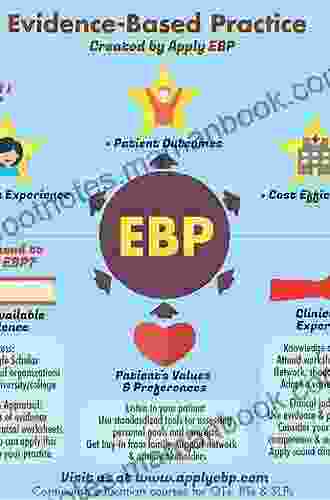Empowering Change: Exploring Evidence-Based and Promising Interventions for Positive Impact

In the realm of human services, interventions play a pivotal role in fostering positive change and empowering individuals to reach their full potential. Evidence-based and promising interventions are cornerstones of effective practice, offering structured approaches that have demonstrated efficacy through rigorous research or shown promising results in preliminary studies. By delving into the fundamentals, applications, and benefits of evidence-based and promising interventions, we can enhance our understanding of their significance and leverage their power to make a lasting difference in the lives of those we serve.
Defining Evidence-Based and Promising Interventions
Evidence-based interventions are interventions that have undergone rigorous scientific evaluation and have been demonstrated to be effective in improving specific outcomes. They are grounded in empirical evidence and adhere to established methodological standards, ensuring their reliability and validity.
4.3 out of 5
| Language | : | English |
| File size | : | 7015 KB |
| Text-to-Speech | : | Enabled |
| Screen Reader | : | Supported |
| Enhanced typesetting | : | Enabled |
| Word Wise | : | Enabled |
| Print length | : | 334 pages |
Promising interventions, on the other hand, are interventions that have shown promising results in preliminary studies or theoretical frameworks but require further research to establish their effectiveness. They offer potential for positive impact but need additional empirical support to be classified as evidence-based.
Characteristics of Effective Interventions
Effective interventions share several key characteristics that contribute to their success:
- Theoretical foundation: Based on established theories and research findings, providing a rationale for the intervention's approach.
- Clear goals and objectives: Articulating specific, measurable, achievable, relevant, and time-bound outcomes.
- Well-defined procedures: Outlining the step-by-step process of implementing the intervention, ensuring consistency and fidelity.
- Trained and qualified practitioners: Delivered by individuals who have received specialized training and possess the necessary skills.
- Regular evaluation and monitoring: Tracking progress and assessing effectiveness to inform ongoing improvement.
Applications of Evidence-Based and Promising Interventions
Evidence-based and promising interventions find application in a wide range of human services domains, including:
- Mental health: Treating conditions such as depression, anxiety, and substance use disorders.
- Education: Enhancing academic performance and promoting positive behavior.
- Social work: Addressing poverty, homelessness, and family dysfunction.
- Healthcare: Promoting healthy lifestyles, managing chronic diseases, and improving patient outcomes.
- Criminal justice: Reducing recidivism and promoting rehabilitation.
Benefits of Evidence-Based and Promising Interventions
The adoption of evidence-based and promising interventions offers numerous benefits:
- Improved outcomes: Demonstrated effectiveness in achieving desired outcomes, leading to positive changes in individuals' lives.
- Cost-effectiveness: Reducing wasted resources by investing in interventions that have been proven to be worthwhile.
- Minimized harm: Avoiding interventions that are ineffective or even harmful, ensuring the well-being of those receiving services.
- Enhanced practitioner confidence: Providing practitioners with evidence-based knowledge and tools, boosting their confidence and effectiveness.
- Accountability and transparency: Holding practitioners and organizations accountable for using interventions that are backed by evidence or show promising potential.
Challenges in Implementing Evidence-Based and Promising Interventions
Despite their advantages, implementing evidence-based and promising interventions can present challenges:
- Resistance to change: Practitioners may be reluctant to adopt new approaches, particularly if they have been using established methods.
- Lack of resources: Implementing and sustaining evidence-based interventions can require significant financial, human, and organizational resources.
- Contextual factors: Interventions may need to be adapted to fit the specific needs and characteristics of the population or setting.
- Ethical considerations: Ethical considerations, such as informed consent and confidentiality, must be carefully addressed in the implementation of interventions.
- Ongoing research and evaluation: Evidence-based interventions require ongoing research and evaluation to ensure their continued effectiveness and to identify potential areas for improvement.
Evidence-based and promising interventions are powerful tools for empowering change and improving outcomes in human services. By understanding their definitions, characteristics, applications, and benefits, we can harness their potential to make a positive impact on the lives of individuals, families, and communities. Overcoming the challenges associated with their implementation requires collaboration, commitment, and a willingness to embrace evidence-informed practice. As we continue to invest in research and evaluation, we can refine existing interventions and develop new ones, pushing the boundaries of what is possible and creating a brighter future for those we serve.
References
- American Psychological Association. (2020). APA handbook of evidence-based practice in clinical psychology, Volume 2: Intervention design and delivery. American Psychological Association.
- National Institute on Drug Abuse. (2018). Principles of drug addiction treatment: A research-based guide (Third edition). National Institutes of Health.
- Substance Abuse and Mental Health Services Administration. (2014). The National Registry of Evidence-based Programs and Practices. https://nrepp.samhsa.gov/
- World Health Organization. (2016). Health systems strengthening: A strategic vision for action. World Health Organization.
Image Alt Attribute: Graph depicting the benefits of evidence-based and promising interventions, including improved outcomes, cost-effectiveness, and enhanced practitioner confidence.
4.3 out of 5
| Language | : | English |
| File size | : | 7015 KB |
| Text-to-Speech | : | Enabled |
| Screen Reader | : | Supported |
| Enhanced typesetting | : | Enabled |
| Word Wise | : | Enabled |
| Print length | : | 334 pages |
Do you want to contribute by writing guest posts on this blog?
Please contact us and send us a resume of previous articles that you have written.
 Top Book
Top Book Novel
Novel Fiction
Fiction Nonfiction
Nonfiction Literature
Literature Paperback
Paperback Hardcover
Hardcover E-book
E-book Audiobook
Audiobook Bestseller
Bestseller Classic
Classic Mystery
Mystery Thriller
Thriller Romance
Romance Fantasy
Fantasy Science Fiction
Science Fiction Biography
Biography Memoir
Memoir Autobiography
Autobiography Poetry
Poetry Drama
Drama Historical Fiction
Historical Fiction Self-help
Self-help Young Adult
Young Adult Childrens Books
Childrens Books Graphic Novel
Graphic Novel Anthology
Anthology Series
Series Encyclopedia
Encyclopedia Reference
Reference Guidebook
Guidebook Textbook
Textbook Workbook
Workbook Journal
Journal Diary
Diary Manuscript
Manuscript Folio
Folio Pulp Fiction
Pulp Fiction Short Stories
Short Stories Fairy Tales
Fairy Tales Fables
Fables Mythology
Mythology Philosophy
Philosophy Religion
Religion Spirituality
Spirituality Essays
Essays Critique
Critique Commentary
Commentary Glossary
Glossary Bibliography
Bibliography Index
Index Table of Contents
Table of Contents Preface
Preface Introduction
Introduction Foreword
Foreword Afterword
Afterword Appendices
Appendices Annotations
Annotations Footnotes
Footnotes Epilogue
Epilogue Prologue
Prologue Laurence O Bryan
Laurence O Bryan R Eugene Pearson
R Eugene Pearson Kendall Talbot
Kendall Talbot Amy Vatne Bintliff
Amy Vatne Bintliff Mike Lupica
Mike Lupica Anna Riva
Anna Riva John Holloway
John Holloway Pedro Urvi
Pedro Urvi Gill Thompson
Gill Thompson Luanne G Smith
Luanne G Smith Tim Leach
Tim Leach Tine Nell
Tine Nell Jean Paul Sartre
Jean Paul Sartre Jean L P Brunel
Jean L P Brunel Dr Claire Warden
Dr Claire Warden Nilo W Hovey
Nilo W Hovey C D Carter
C D Carter Ignacio Mattos
Ignacio Mattos Eileen Figure Sandlin
Eileen Figure Sandlin Robert F Roby
Robert F Roby
Light bulbAdvertise smarter! Our strategic ad space ensures maximum exposure. Reserve your spot today!

 Hunter Mitchell10 Enchanting Christmas Songs Adorned by the Melodious Strings of Violin and...
Hunter Mitchell10 Enchanting Christmas Songs Adorned by the Melodious Strings of Violin and...
 Yasunari KawabataEmbracing the Sustainability Challenge: A Journey Through the Textile...
Yasunari KawabataEmbracing the Sustainability Challenge: A Journey Through the Textile...
 Robert ReedA Comprehensive Exploration of the History, Teachings, and Cultural Impact of...
Robert ReedA Comprehensive Exploration of the History, Teachings, and Cultural Impact of... Clark CampbellFollow ·8.9k
Clark CampbellFollow ·8.9k Braeden HayesFollow ·7.4k
Braeden HayesFollow ·7.4k Chad PriceFollow ·7.7k
Chad PriceFollow ·7.7k Adam HayesFollow ·19.9k
Adam HayesFollow ·19.9k Jason ReedFollow ·9.1k
Jason ReedFollow ·9.1k Duncan CoxFollow ·6.6k
Duncan CoxFollow ·6.6k Tom ClancyFollow ·7.7k
Tom ClancyFollow ·7.7k Stuart BlairFollow ·8.8k
Stuart BlairFollow ·8.8k

 Colin Foster
Colin FosterBlacktop Wasteland: A Novel S A Cosby
In the vast literary landscape of...

 Curtis Stewart
Curtis StewartOvid's Metamorphoses: An Ancient Epic of Transformation...
Ovid's Metamorphoses is an epic poem...

 Adam Hayes
Adam HayesThe Elements of Piano Playing Op. 30: A Comprehensive...
: Unveiling...

 Patrick Hayes
Patrick HayesLee Marvin and The Long Night: A Tale of Vengeance, Grit,...
In the annals of Western cinema, few...

 Jermaine Powell
Jermaine PowellUnveiling the Alluring World of Romantic Thrillers,...
Prepare to delve into a...
4.3 out of 5
| Language | : | English |
| File size | : | 7015 KB |
| Text-to-Speech | : | Enabled |
| Screen Reader | : | Supported |
| Enhanced typesetting | : | Enabled |
| Word Wise | : | Enabled |
| Print length | : | 334 pages |








